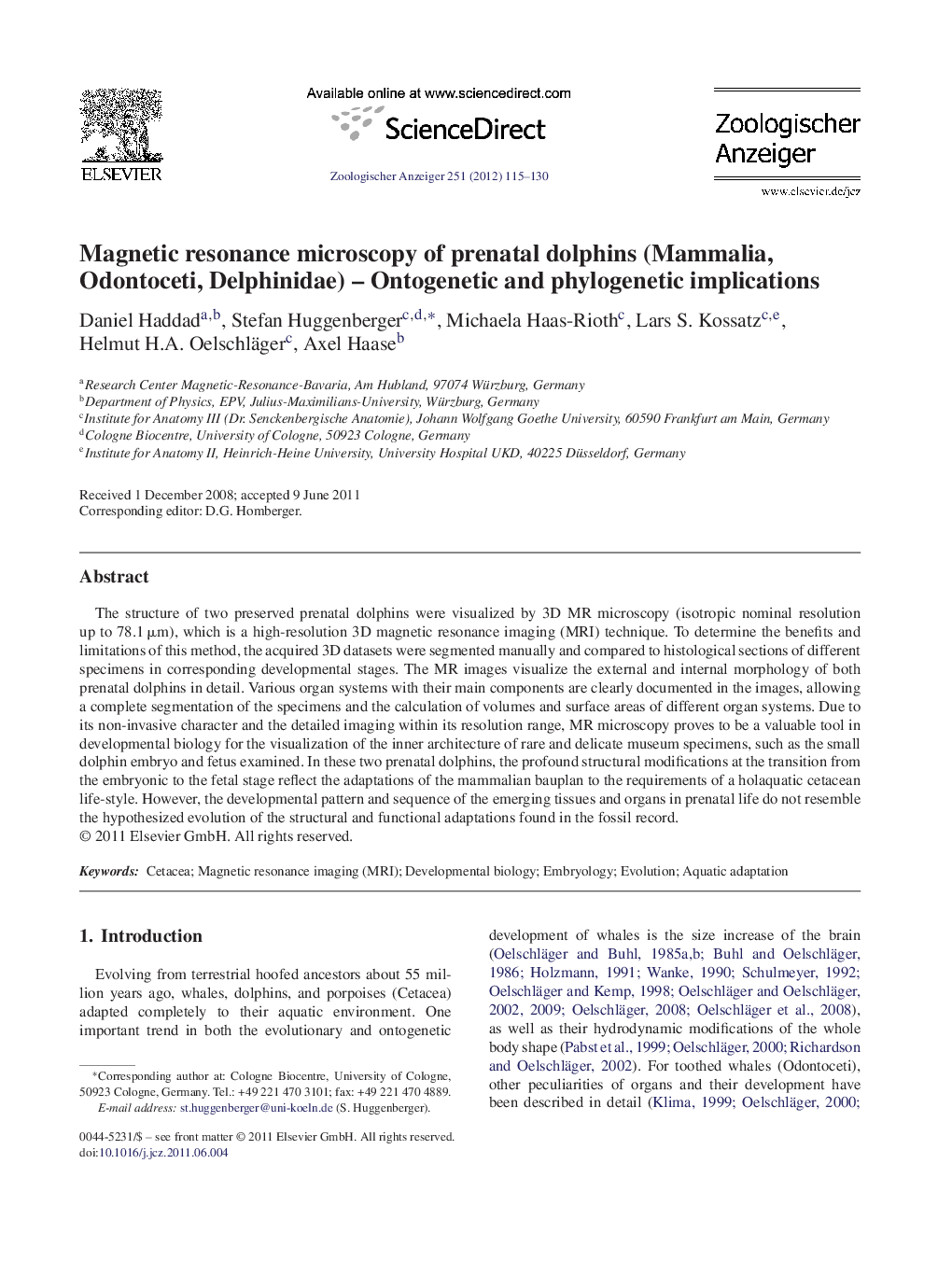| Article ID | Journal | Published Year | Pages | File Type |
|---|---|---|---|---|
| 2790621 | Zoologischer Anzeiger - A Journal of Comparative Zoology | 2012 | 16 Pages |
The structure of two preserved prenatal dolphins were visualized by 3D MR microscopy (isotropic nominal resolution up to 78.1 μm), which is a high-resolution 3D magnetic resonance imaging (MRI) technique. To determine the benefits and limitations of this method, the acquired 3D datasets were segmented manually and compared to histological sections of different specimens in corresponding developmental stages. The MR images visualize the external and internal morphology of both prenatal dolphins in detail. Various organ systems with their main components are clearly documented in the images, allowing a complete segmentation of the specimens and the calculation of volumes and surface areas of different organ systems. Due to its non-invasive character and the detailed imaging within its resolution range, MR microscopy proves to be a valuable tool in developmental biology for the visualization of the inner architecture of rare and delicate museum specimens, such as the small dolphin embryo and fetus examined. In these two prenatal dolphins, the profound structural modifications at the transition from the embryonic to the fetal stage reflect the adaptations of the mammalian bauplan to the requirements of a holaquatic cetacean life-style. However, the developmental pattern and sequence of the emerging tissues and organs in prenatal life do not resemble the hypothesized evolution of the structural and functional adaptations found in the fossil record.
